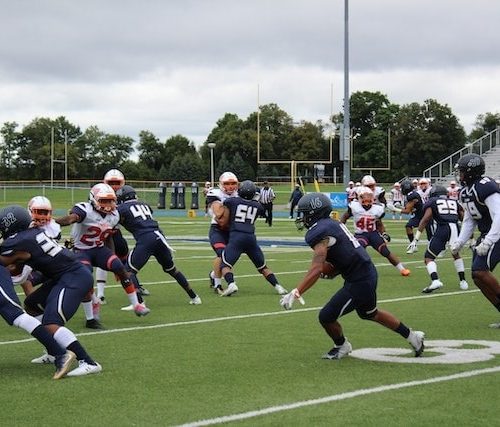Amidst another demanding season, Chicago Bears football coach Alan Williams emerges as a pivotal figure, shaping the team’s defensive prowess. Williams’ visionary strategies and methodical approach are redefining the Bears’ defensive identity, known historically for its aggression and tenacity. His meticulous planning and emphasis on fundamentals cultivate a competitive yet unified team culture, extending beyond game days to transformative practice sessions. Below, we delve deeper into the specific changes that have taken place since Williams joined the coaching staff.
How Alan Williams is Reshaping the Chicago Bears Defense
Through meticulous planning and focusing on fundamentals, Williams has markedly improved the Bears’ overall defensive performance. His philosophy centers around optimizing individual players’ strengths to enhance the cohesion and efficiency of the unit as a whole. This person-centered approach has already garnered respect and buy-in from the players, fostering a competitive yet unified team culture.
Coach Williams’ impact isn’t limited to game days; it extends into practice sessions where he emphasizes precision and attention to detail. By challenging his players with complex scenarios and encouraging intellectual growth, Williams ensures that his defense is ready for any situation on the gridiron. The realignment of the defensive playbook under his guidance reflects a balance between tried-and-true methods and innovative tactics.
The growing confidence in the Bears’ defense suggests that Williams’ strategies bear fruit. As Chicago’s gridiron warriors adapt to his coaching ethos, improvements in their execution during pivotal moments have become increasingly evident.
Strategic Shifts and Tactical Adjustments Under Williams’ Guidance

Since stepping into his role, Coach Williams has adopted a multifaceted approach, resulting in significant strategic shifts for the Bears’ defense. Perhaps most noticeable is the increased emphasis on versatility, allowing the team to switch formations fluidly in response to offensive threats. This has challenged opposing teams that attempt to exploit weaknesses, as the Bears present a more unpredictable and adaptable front.
Williams has also adjusted the focus on blitz frequency, using it as a strategic tool rather than a staple. This means that pressure on the quarterback is applied judiciously, resulting in more opportunities for the Bears’ secondary to make plays on the ball. By doing so, Williams has helped balance risk and reward, leveraging the defense’s athleticism and instincts.
Tackling efficiency and ball-hawk mentality have been other areas under Williams’ microscope. There’s been a visible dedication to fundamentals in tackling, minimizing the opponents’ yards after catch (YAC) — a critical component in a league that increasingly favors the passing game. Additionally, creating turnovers has been an emphasized goal, with Williams inspiring his secondary to adopt a more aggressive stance on pass defense.
The coordination between the defensive line and the secondary illustrates Williams’ belief in a holistic defensive approach. Linemen are not just pass rushers in his system; they are also crucial in pass coverage, dropping back when necessary to add complexity to the coverage schemes. These adjustments have revitalized the defense and paved the way for a comprehensive analysis of their impact, comparing metrics before and after Williams’ tenure began.
Player Development and Performance Enhancement with Williams at the Helm
Individual player development is another area in which Coach Williams’ influence has been undeniable. His dedication to player growth is evident in the marked improvement of several key defensive figures. Players who previously showed potential are now coming into their own, demonstrating increased awareness, technique, and impulse on the field.
One hallmark of Williams’ coaching style is his ability to instill confidence in his players. This psychological factor can’t be overstated, as self-assured players are likelier to take calculated risks, resulting in game-altering plays. The heightened performance of the Bears’ secondary is a clear product of this newfound confidence, with defensive backs effectively managing their zones and engaging in one-on-one matchups.
Moreover, Williams has a knack for maximizing the skillsets of his linebackers, leveraging their speed and agility to fortify both pass and run defense. By adjusting their roles to fit their strengths, he’s created a more dynamic unit capable of making plays all over the field. Linebackers under Williams’ watch have shown enhanced pass coverage abilities, adding depth to the team’s defense.
The defensive line, too, has thrived, honing its ability to disrupt the backfield while staying disciplined against the run. This cohesion across different levels of the defense is indicative of Williams’ comprehensive approach to player development. Through nurturing talent and fostering a supportive environment, Williams has optimized the performance of his defensive squad.
Overall, the impact of Coach Alan Williams on the Chicago Bears’ defense is impressive and measurable. His hands-on approach to player development and strategic innovations have cultivated a stronger, more resilient defensive unit poised for success in the league’s ever-evolving competitive arena.






